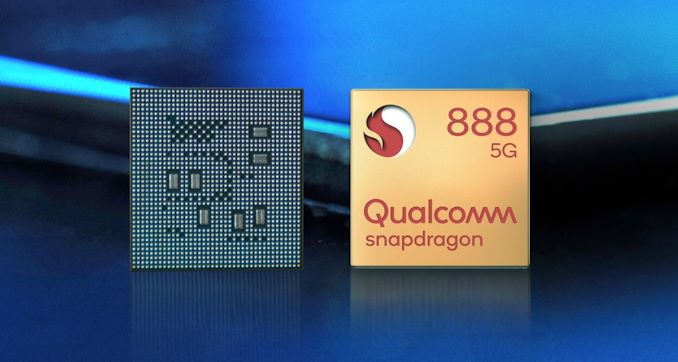The Qualcomm QCN5122 is a Wi-Fi 6 (802.11ax) networking IC designed for high-performance Wi-Fi 6 routers, gateways, access points, and other networking devices. It supports dual-band (2.4GHz and 5GHz) Wi-Fi and incorporates advanced technologies like OFDMA (Orthogonal Frequency Division Multiple Access), MU-MIMO (Multi-User, Multiple Input, Multiple Output), and BSS Coloring, which optimize wireless performance and enable efficient use of the available spectrum, particularly in crowded environments.
If you're looking for equivalent ICs to the Qualcomm QCN5122, several manufacturers produce similar Wi-Fi 6 solutions that offer comparable features, including dual-band Wi-Fi, OFDMA, MU-MIMO, and other advanced Wi-Fi technologies. Here are some equivalent ICs:
1. Broadcom BCM43684
Type: Wi-Fi 6 (802.11ax) Chipset
Features: The BCM43684 is a Wi-Fi 6 (802.11ax) chip from Broadcom, designed for dual-band (2.4GHz and 5GHz) Wi-Fi operation. It supports key Wi-Fi 6 features such as OFDMA, MU-MIMO, and 1024-QAM for higher data rates and efficient spectrum use.
Application: High-performance routers, mesh systems, and access points.
Advantages: Broadcom’s solutions are widely used in consumer and enterprise-grade devices, offering a well-established and reliable Wi-Fi solution.
2. MediaTek MT7915
Type: Wi-Fi 6 Chipset
Features: The MT7915 is a Wi-Fi 6 solution that supports dual-band (2.4GHz and 5GHz) Wi-Fi and features advanced capabilities like OFDMA, MU-MIMO, and TWT (Target Wake Time) for improved efficiency. It also supports 1024-QAM and provides high throughput for devices in both home and enterprise networking environments.
Application: Used in Wi-Fi routers, gateways, and mesh systems.
Advantages: MediaTek’s Wi-Fi solutions are cost-effective while still delivering solid performance for Wi-Fi 6 deployments.
3. Marvell 88W9068
Type: Wi-Fi 6E Chipset
Features: The 88W9068 supports Wi-Fi 6E (802.11ax) with tri-band (2.4GHz, 5GHz, and 6GHz) support, and includes features such as OFDMA, MU-MIMO, and BSS Coloring. It's an excellent choice for high-performance applications that demand high throughput and low latency.
Application: High-performance Wi-Fi routers, mesh systems, and access points.
Advantages: Marvell’s 88W9068 supports the 6GHz band in addition to the typical 2.4GHz and 5GHz, making it a strong choice for future-proofing in Wi-Fi 6E environments.
4. Realtek RTL8852AE
Type: Wi-Fi 6 (802.11ax) Chipset
Features: The RTL8852AE from Realtek is a dual-band Wi-Fi 6 chipset with support for OFDMA, MU-MIMO, and 1024-QAM, providing improved data throughput and network efficiency. It is designed for a wide range of consumer and home networking applications.
Application: Consumer routers, Wi-Fi 6-enabled devices, and access points.
Advantages: Realtek offers affordable Wi-Fi 6 solutions with solid performance, making this a cost-effective alternative.
5. Intel Wi-Fi 6 AX200
Type: Wi-Fi 6 Chipset
Features: The Intel AX200 supports Wi-Fi 6 (802.11ax) in dual-band (2.4GHz and 5GHz) with OFDMA, MU-MIMO, and 1024-QAM. While primarily used in client devices like laptops and desktops, it can also be integrated into routers and access points.
Application: Laptops, desktops, routers, and access points.
Advantages: Intel’s chipsets are known for their strong ecosystem support and excellent performance in client devices and networking hardware.
6. Qualcomm QCA6391
Type: Wi-Fi 6 Chipset
Features: The QCA6391 is part of Qualcomm’s Wi-Fi 6 (802.11ax) solutions, supporting dual-band (2.4GHz and 5GHz) Wi-Fi with advanced features like OFDMA, MU-MIMO, and 1024-QAM. It’s designed for next-gen consumer routers, mesh systems, and access points.
Application: Wi-Fi 6 routers, gateways, and mesh systems.
Advantages: As another solution from Qualcomm, the QCA6391 benefits from similar high-performance capabilities and features as the QCN5122.
7. Cisco Meraki Wi-Fi 6 Chipsets (e.g., MTK or Broadcom-based solutions)
Type: Wi-Fi 6 Chipset
Features: Cisco Meraki uses various chipsets in its enterprise-class Wi-Fi access points, including Broadcom and MediaTek-based solutions that support Wi-Fi 6 and key features like OFDMA, MU-MIMO, and BSS Coloring.
Application: Enterprise routers, access points, and mesh systems.
Advantages: Cisco's Wi-Fi solutions are trusted for enterprise-grade performance, scalability, and security.
Key Features of Equivalent Parts:
Wi-Fi 6 (802.11ax) Support: These chips support Wi-Fi 6, delivering faster speeds, higher capacity, and better performance in crowded environments.
Dual-Band or Tri-Band: Many of these solutions support dual-band (2.4GHz and 5GHz) or tri-band (including 6GHz for Wi-Fi 6E) to ensure better performance in complex environments.
OFDMA & MU-MIMO: These technologies allow better management of wireless traffic by enabling multiple users to transmit simultaneously, improving efficiency.
1024-QAM: Higher-order modulation schemes like 1024-QAM offer increased data throughput and better spectrum utilization.
Conclusion:
The Qualcomm QCN5122 has several strong alternatives, including chipsets from Broadcom, MediaTek, Marvell, Realtek, Intel, and even Qualcomm itself (with solutions like the QCA6391). These alternatives provide Wi-Fi 6 support, OFDMA, MU-MIMO, and 1024-QAM, making them suitable for high-performance routers, mesh networks, and other Wi-Fi 6 devices. The choice of IC depends on factors like performance needs, price, integration options, and future-proofing (especially for Wi-Fi 6E).
Other

What is HBM (High Bandwidth Memory)?
2024.09.05

What is Antenna Tuner IC?
2024.09.20

What’s the Difference between LPDDR and DDR?
2024.09.25

Snapdragon 888 5G Mobile Platform
2024.09.26

What is WiFi 6E?
2024.09.26

What is Bluetooth Audio SoC?
2024.09.26

What's HBM3E (High Bandwidth Memory 3)?
2024.09.26

What is an Audio Codec?
2024.10.09





